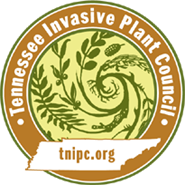Tribulus terrestris L.
Puncturevine| Threat Level | Category |
|---|---|
| Emerging | Forb/Herb |

Description
Stem
Puncturevine is an annual (sometimes perennial in warm climates) herb with a long, slender, branched tap-root. The greenish-red stems are up to 2 m long, branched, radiating from a central axis and covered with fine hairs. Though usually prostrate, the stems become more erect in shade or when competing with other plants.Leaves
Leaves, 3-7 cm long, are in opposite pairs with one of the pair slightly smaller than the other. Each leaf consists of three to eight pairs of opposite, oblong-lanceolate leaflets, each leaflet being 5 to 15 mm long and 3 to 5 mm wide. The upper surface of the leaflets is darker than the underside.Flowers
The flowers are yellow, five-petalled, 7 to 15 mm in diameter, solitary and borne on short stalks in the axils of the smaller of each pair of leaves; they open in the morning and close or shed their petals in the afternoon.Fruit
The fruit is a woody burr, approximately 1 cm in diameter, which splits into 4 or 5 wedge-shaped segments (carpels), each with 2 unequal pairs of spines and containing 1 to 4 seeds. Seeds are yellow, variable in shape but more or less ovoid and 2 to 5 mm long.Images
Photo: Forest & Kim Starr, U.S. Geological Survey, Bugwood.orgMore images of Tribulus terrestris
Life History
In India, T. terrestris is used in folk medicine as a tonic and diuretic, and for the treatment of painful urination, calculous affections and Bright's disease. Leaves are rich in calcium but poor in iron, providing a cheap supplement to rice diets (Ambusta, 1986). There are indications that T. terrestris may have potential as a treatment for urinary stones (Al Ali et al., 2003), Parkinson's disease (Badmaev, 2002), malignant melanoma (Bedir and Khan, 2000), liver and eye diseases (Li et al., 1998) and benign prostatic hyperplasia (Lokesh et al., 2001). There is some evidence that T. terrestris can improve male sexual function (Gauthaman et al., 2002) and the performance of athletes (Krcik, 2001). Care should be exercised in the use of T. terrestris because it contains poisons that can harm man. Comprehensive details of the medicinal value of T. terrestris are reviewed by Ross (2001).Habitat
Puncturevine occurs on almost any soil type but grows best in dry, loose, sandy soils and prospers near sand dunes or loose blown soil around field margins. It also grows in heavier soils, especially when these are fertile or moist, and on compacted soils such as those found along roadsides.Origin and Distribution
Puncturevine is native to the Mediterranean region. Currently in USA (AR, AZ, CA, CO, FL, HI, IA, ID, IL, IN, KS, KY, LA, MD, MI, MN, MO, MS, MT, NC, ND, NE, NJ, NM, NV, NY, OH, OK, OR, PA, SC, SD, TN, TX, UT, VA, WA, WI, WY)Canada (BC, ON)
Management Recommendations
Mechanical Control
A primary objective of control is to prevent the production of seeds, which can remain viable in the soil for 3 to 6 years, and fruits (burrs) which injure man and livestock. Because the seeds germinate irregularly throughout the year and because the plants can flower and set seeds in such a short time, single or infrequent cultivations are not sufficient to reduce seed populations. T. terrestris has a taproot, so that shallow cultivation may be the most effective means of cultural control. Deep ploughing appears to have little advantage because the seeds are long-lived in the soil, especially when buried at depth. If fruits have formed, plants should be cut so that seeds cannot ripen (Holm et al., 1977).'Prickle rollers' covered with carpet have been developed to gather and remove surface fruit from drying greens in vineyards (Parsons and Cuthbertson, 1992).
Soil solarization, using thin transparent polyethylene mulches for a period of 3 to 6 weeks, causes a considerable decline in the number of plants and dry weight of T. terrestris (Anju and Gaur, 1998).
Competition from perennial species or annual cover crops reduces the establishment and growth of T. terrestris but it is difficult to achieve on the sites most frequently infested (Parsons and Cuthbertson, 1992).
